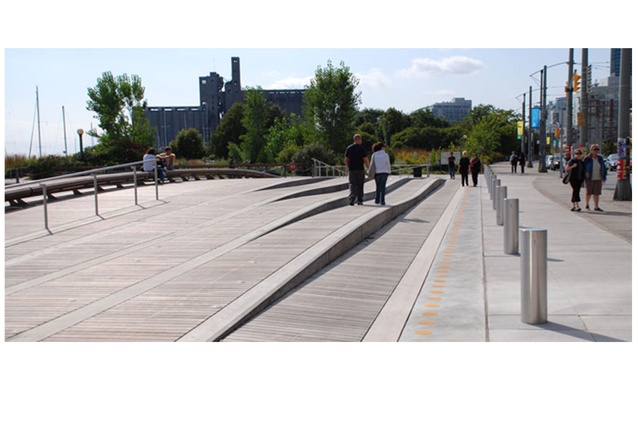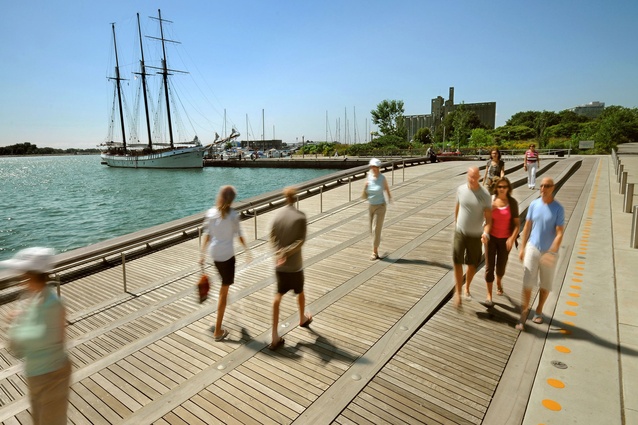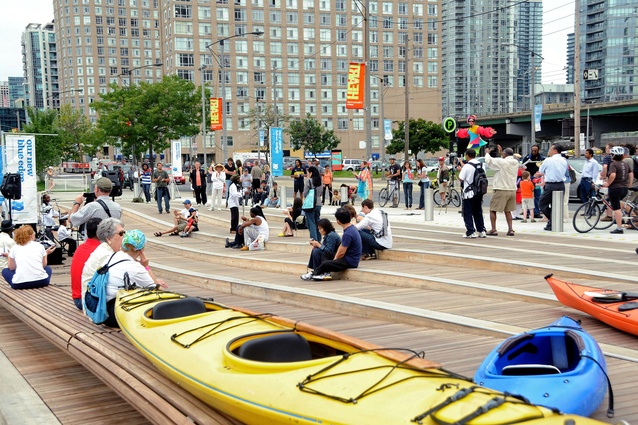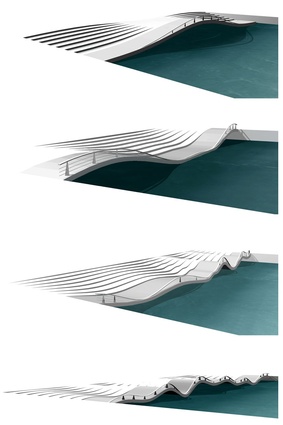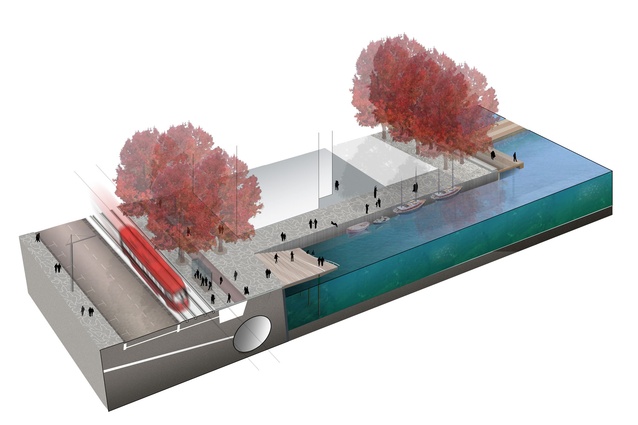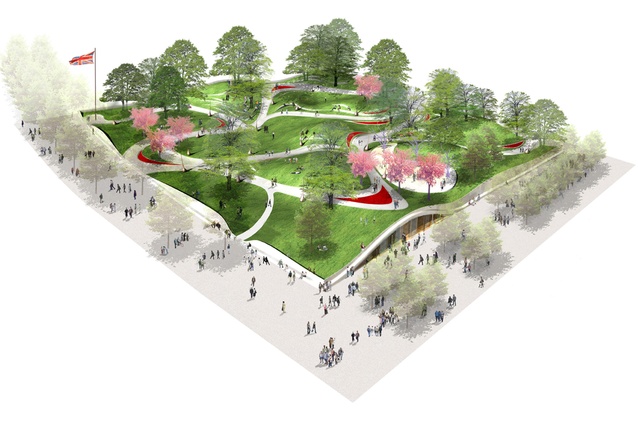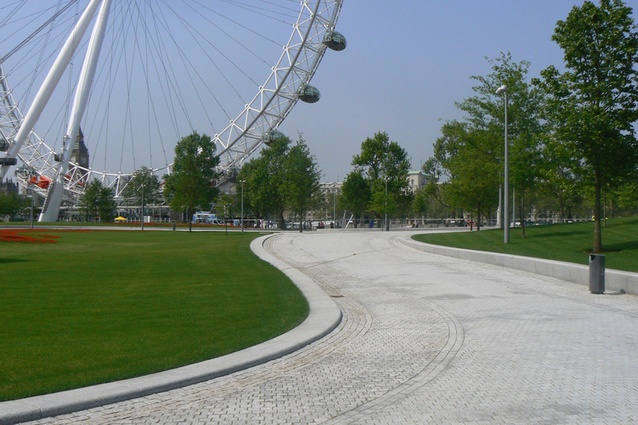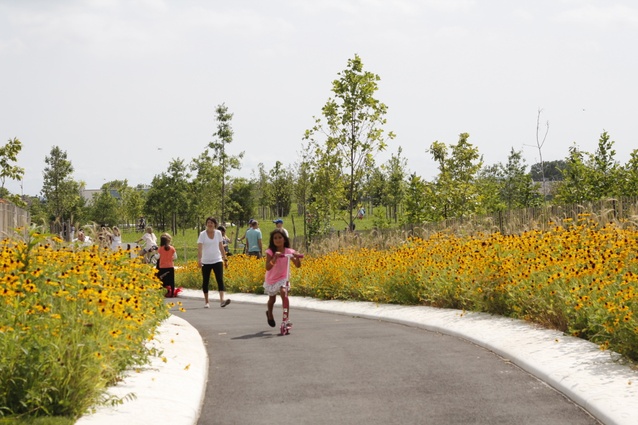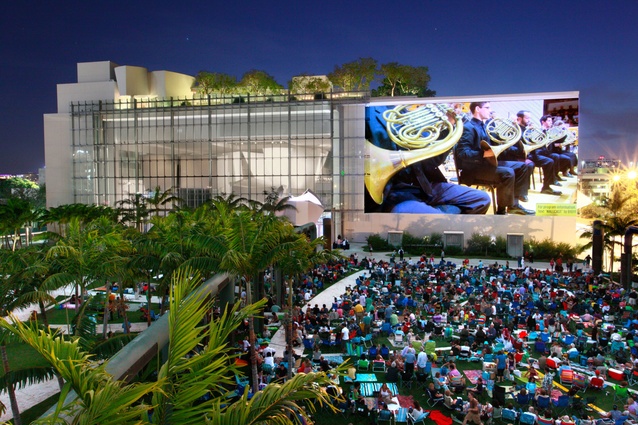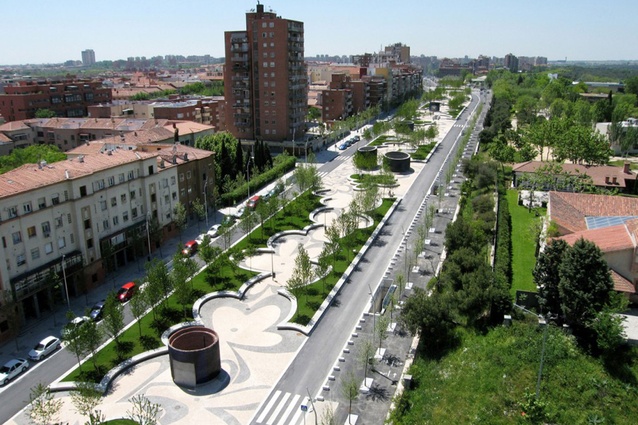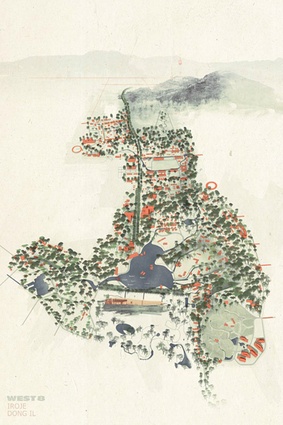West 8
ArchitectureNow talks with Maarten Buijs of West 8, the landscape architecture and urban design practice renowned for its success in realising complex large-scale urban regeneration projects. West 8’s recent projects include: the ongoing revitalisation of Toronto Waterfront; a series of works on iconic sites throughout London; Madrid RIO, the significant reworking of infrastructure and riverside parkland through the heart of Madrid; and, Governors Island in New York City, which opened 30 acres of new park and public space in May this year.
ArchitectureNow: Maarten, how are you? You’re here on a fleeting visit. What brings you this way?
Maarten Buijs: I’m on holiday, visiting Australia, mostly, where I used to live. My wife is Australian and our children were born there, so we are visiting friends and family, both in Melbourne and in Cairns.
AN: Have you been to New Zealand before?

MB: I’m breaking my head trying to remember why I was here the last time. I was in Auckland for half a day around 2000, when the America’s Cup was down here…
AN: Are you based in Rotterdam now?
MB: Yes, the head office is in Rotterdam. West 8 only has, for all intents and purposes, two offices. One in Rotterdam, where we employ 60 or 70 staff, and one in New York, which is growing very quickly. They are up to 15, I think. The notion of having two offices is actually completely against the grain of West 8. We tend to think that everything should be centrally organised to maintain quality of work.
AN: So everything filters through a clear hierarchy?
MB: That’s exactly right. And Adriaan [Geuze – the firm’s principal] wants to be in the know about every project; he walks into the office and picks up immediately if things are not the way he wants them. And obviously, when there is another office, he has to go there to discover these things. So that’s an additional burden on him. At the moment, we also have two people in Toronto – but they are not in an office. They are doing project administration on the waterfront project we’re doing there at the moment. Formally, but mostly nominally, we have an office in Brussels, in Belgium.
AN: What have you been working on recently? You mentioned Toronto – did you work on that project?
MB: Yes. Toronto’s a big job. Nearly the whole office has worked on that project, but I was project managing it with another guy who was the design manager. It was a two-man job to get the project through design development. In that respect I know the project quite well. That was three years ago. Documentation was a huge job. Apart from Toronto, I’m involved in big organisational things, field alterations or contractual issues, or whatever, but most of my work is in London.
AN: What are you working on there?
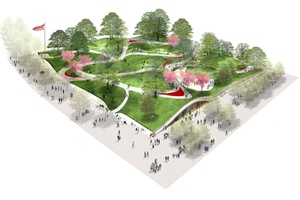
MB: In the last year or so I’ve worked on about six projects, one that I have to mention is Jubilee Gardens, which you might know of. It was the bane of my life! When I was with West 8 in Holland, in 1998, we were commissioned for this project, so I started working on it. Then, after I returned from years in Australia, I managed to get it finished just in time for the Diamond Jubilee, in 2012. It took 14 years to build.
AN: That’s a good-sized project…
MB: I was in Australia for most of the middle part of the project but I did the last bit – the politics in the UK are just something else.
AN: Post-GFC how is London looking?
MB: London in general is a completely different scenario to the rest of Europe. You arrive in London, you see the skyline and there are 50 cranes there. Building is completely berserk. Apart from Jubilee Gardens, another project that I’ve been working on for five years is the refurbishment is an ex-Commonwealth Institute building on Kensington High Street. The site, which was bought by a developer, is heritage listed, although the building is from the 1960s, so it’s unusual that it had that status. The developer was prepared to fix it up on the condition that he could develop the rest of the site. So, he got planning permission to build three apartment buildings. It’s a fairly big site, but next door to Holland Park and on Kensington High Street, you can just imagine the value of the real estate. During the process they found a tenant as well – the Design Museum. At the moment it’s on the Thames, but they’re moving in there. It’s a much better building for them. It’s a fantastic building, absolutely mind-blowing.
AN: What else do you have happening in London?
MB: There’s the work on the Southbank that we’ve been involved with… again it’s all politics. A fairly straightforward job of incorporating roof terraces on the building, which puts more levels on the building, but at the moment the project’s not going anywhere. Then we have a public realm under a building by David Chipperfield Architects, Elizabeth House, [http://www.elizabethhousewaterloo.co.uk], next to WWaterloo Station, which in itself is a really interesting location because of the amount of people that come though. It’s just astronomical. And they sort of filter through that area, and I think there is something like 40,000 workers in the building itself. It’s a skyscraper, ridiculous, incredible. Finally, after two years, we got the planning completely through.And we are also working on a project at the moment called Silvertown, which is near London City Airport. That is docklands, that’s going to be rejuvenated; it will be a new piece of the city with the necessary retail and housing.
AN: You’re a global practice; your list of completed projects reads like an atlas. But surely not all jobs are created equal… what criteria do you have for choosing work?
MB: We weren’t exactly immune to the GFC, but there is a shift in the type of work we are doing and definitely a shift in the location where we are working. So we are moving away [from Europe]. There has been more work in America done, North and South America…
AN: Like Governor’s Island?

MB: Yes in New York. That’s only reason we have our New York office. We won a design competition and one of the conditions of the competition was that it had to be designed by Americans. Governor’s Island, as a project obviously requires a fair amount of input at times, but then you have the staff employed when there is a lull, as in when you are waiting for feedback or the client is reading documentation for a month and there are five or ten people sitting around, so what do they do? There was an automatic need to get stuff to do and one of the success stories from one of those down periods was the Miami Soundscape at Miami Beach. There’s a park next to the new symphony building, which was done by Gehry, and the park has been designed for people to just sit outside and enjoy what is happening inside on enormous screens so the concert is being projected on the building and the sound system is state of the art. As a result of that we are now doing the convention centre. The council was so happy there that the work just followed on.
AN: You like complexity in projects? Intellectual challenge?
MB: Absolutely. Bread and butter work, anybody can do that, you can earn money, but does it keep you awake? In 2007, we said no to nine of the ten requests to do some work. If we had said yes it would have been too busy anyway, we don’t want to grow, there’s no need to grow, or lose control.
AN: A lot of your work is competition based, some commissioned. Do you like the competition aspect of procuring work?
MB: When a project is very controversial or very difficult or very high profile, the owners of the organisers of the competition already sort of know that they can’t just give it to anyone, so they make it a competition. Therefore we are in it because it is exactly the kind of work that we like to do. What we have increasingly learnt is that competitions are extremely unpredictable and with the media at the moment they are also becoming less and less fair. The criteria on which you are assessed are being influenced by popular vote, for example, and that’s not the way to do business.
AN: So, for instance, a render of a design might be put into the newspaper and the public is asked which one they like?
MB: That’s exactly right. You submit your material and the next day you see it online, before the jury has made a decision. That’s wrong. In that respect we are now more and more looking at completely paid submissions. We are quite happy to think about things but only if at least we get paid for it, so that we get our costs back. That said, obviously it’s always worthwhile winning, because you get a commission out of it.
AN: And what about once you win. The Toronto waterfront project for example – was it hard to gain local acceptance when you came in as an outsider?
MB: We always team up with a local firm. And there is an enormous amount of PR to be done. You have to build a support base with local stakeholders that are prepared to act as champions for the project. You have to get journalists onside who really understand what you are trying to do. And you have to be completely open.
In Toronto, there was a series of projects, early interventions, installations which were made to draw people in and to ask them, ‘what do you think?’ Waterfront Toronto is the client there. They are a semi-government organisation being funded by federal, provincial and local governments with an enormous budget, which they have to do a lot of work for. But they were like, ok, that’s a good idea, we’re happy to accommodate that. They saw the value of having an installation, a test, let’s just try it.

The big thing in Toronto was eliminating one of the two-lane separated roads. So rather than being two lanes each way it became a dual carriageway, on one side, and the trams stayed where they were and the rest was going to become the public domain for cyclists and pedestrians. That was, for many residents, unthinkable – the whole city was going to come to a stop! But the traffic models actually showed that by doing this you would actually increase the traffic flows, because the dual lanes and associated parking generated much more friction than a single lane of traffic flowing smoothly. Then, also, you have to organise traffic lights and pedestrian flows across, but how much easier it is when there is only two lanes.
AN: It’s interesting that even when you can predict the model it can still seem counter-intuitive. That’s the hard sell.
MB: People still don’t believe it, even when the traffic engineer was straight-faced explaining it. He was booed by a number of people.
AN: What have you done in Auckland while you’ve been here? Seen anything that’s caught your eye?
MB: I’ve been to the Auckland Art Gallery and saw the exhibition of apartment designs.
AN: What did you think?
MB: Well, it was all completely without context to me. I’m not familiar with the site…
I’ve also been down on the waterfront, walking up and down. One of my observations would be that it is very similar to certain aspects of Toronto. Very similar. The traffic is much the same; the difference in Toronto is that ships are sailing into the land, whereas here they are mooring against the piers. The connection between the city and the water is really not as big a deal here as it was in Toronto. In Toronto, the city is completely separated from the water by highways and by freeways on stilts, and underneath a local road, and there is also a rail corridor.
AN: We have a mayor at the moment who is very interested in Auckland becoming the most liveable city in the world.
MB: It’s not the first time I’ve heard that particular slogan.
AN: What do you think cities need to do to become more liveable? What are the keys to reinvention?
MB: I think the regulation of traffic, and therefore transport, is all-important. I honestly believe that. The ‘green’ is of course adding the feel-good component, but ultimately it is about walking through a street and not being irritated by, or feeling the psychological affects, of trucks and buses, the noise, the pollution. That’s not to say that car traffic needs to be banned because obviously traffic to an extent provides activity. You don’t want a dull, boring city where people only walk. You also want the various modes of transport interacting. In that respect, every time I’m there I’m blown away by the public transport system in London. The fact that you have an underground that has a train every three minutes, and they’re at capacity. I just have admiration for that system. You have a completely at-capacity underground, so what do you do, you build cross rails underneath to make it even quicker. That’s brilliant.
The notion, in London, when you take a cab is it takes double the time and costs ten times as much. That’s honestly what happens. Why would you do anything else, unless you’ve got too much money and too much time.

